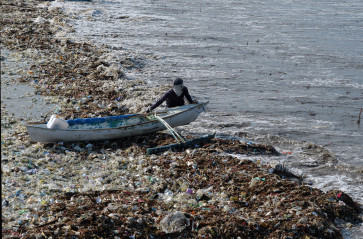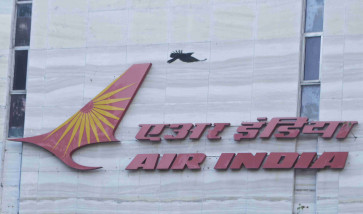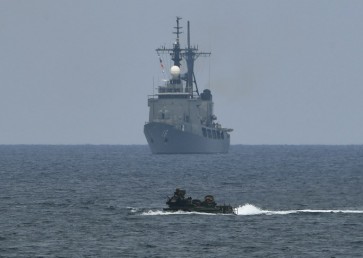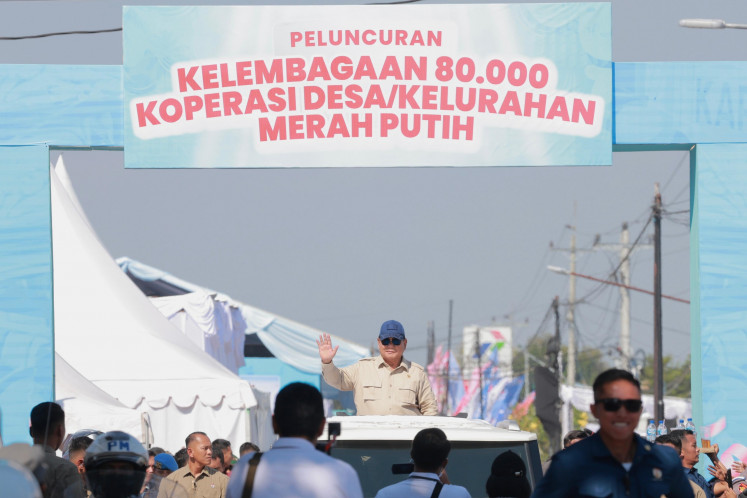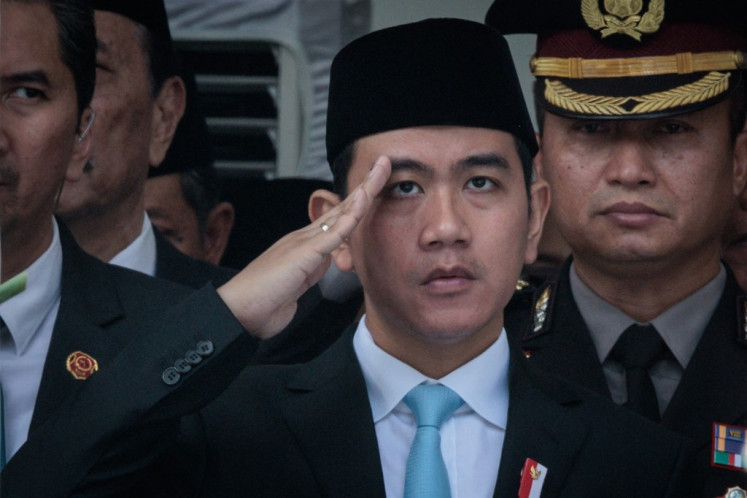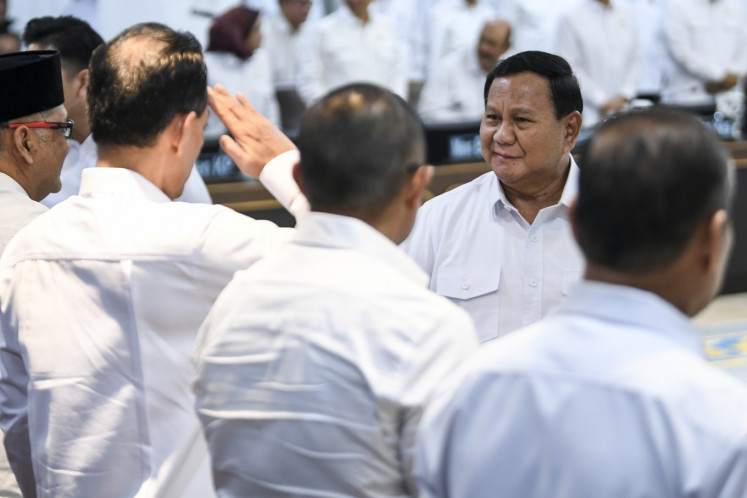Popular Reads
Top Results
Can't find what you're looking for?
View all search resultsPopular Reads
Top Results
Can't find what you're looking for?
View all search resultsBuilding an ASEAN Community: A distant dream?
Foreign Minister Marty Natalegawa, then director general for ASEAN cooperation at the Foreign Ministry, clearly said after signing the Bali Concord II in 2003, that Indonesia did not want empty promises and nice agreements on paper regarding ASEAN affairs
Change text size
Gift Premium Articles
to Anyone
F
oreign Minister Marty Natalegawa, then director general for ASEAN cooperation at the Foreign Ministry, clearly said after signing the Bali Concord II in 2003, that Indonesia did not want empty promises and nice agreements on paper regarding ASEAN affairs.
“We didn’t want agreements that were meant for keeping on the shelves. What we wanted was their implementation,” Marty said in an interview with The Jakarta Post.
True to his word, Indonesia, ASEAN’s present chair, has been playing a major role to make the ASEAN Community a reality since 2003. But many people still consider the whole concept a distant dream. Why?
Unlike the European Union (EU) whose members share common religious beliefs and democratic cultures, the 10 member nations of the Association of Southeast Asian Nations have vast differences in terms of economic development, political systems and religion, in spite of their geographical proximity.
Singapore and Brunei are in the list of world’s top five richest countries, while Cambodia, Laos and Myanmar are in the UN’s list of least developed countries. Others are somewhere in between, with most being developing countries.
On the political front, some ASEAN countries have democratic systems while others are either autocratic, communist or have a governing sultanate. There are also vast differences in social and educational development levels. We have countries where the vast majority of the population is either Muslim, Christian or Buddhist. Linguistically also, people in Southeast Asia speak hundreds of different languages and dialects.
Yet Indonesia and other ASEAN countries have agreed to embark on this ambitious plan with a common vision and commitment to build a community and have lasting peace, stability, sustained economic growth, shared prosperity and social progress in the region.
“That diverse Southeast Asia nations can share the same aspiration to build the ASEAN Community is in itself a milestone,” says former ASEAN secretary general Ong Keng Yong.
Indonesia did not keep quiet after 2003 but initiated a process along with its regional peers to draft the ASEAN Charter in 2005 and set a new deadline for building an ASEAN Community by 2015. After two years of intense deliberations, ASEAN finally adopted the Charter in 2007, earning more strength and legal status.
In an effort to build an ASEAN Community with three main pillars — ASEAN Political-Security Community (APSC), ASEAN Economic Community (AEC) and ASEAN Socio-Cultural Community (ASCC) — the regional association not only witnessed the quick ratification by member countries but also adopted the three blueprints for realization of the dream.
The ASEAN-six countries (Indonesia, Brunei, Singapore, Malaysia, the Philippines and Thailand) achieved zero tariffs covering 99.65 percent of the total tariff lines traded under the Common Effective Preferential Tariff Scheme for ASEAN Free Trade Area (CEPT-AFTA).
ASEAN had signed free trade agreements with China, South Korea, India, Australia and New Zealand. As a result, China has emerged as ASEAN’s biggest trading partner. ASEAN’s trade with East Asian reached 55 percent.
With 600 million people and a combined GDP of US$2.5 trillion (2010), ASEAN has been enjoying a robust economic growth in recent years.
“ASEAN recorded impressive economic growth of 7.4 percent in 2010 against a world average of 5 percent. ASEAN is also expected to grow 5.5 percent this year and 5.7 percent in 2012,” ASEAN Deputy Secretary-General for ASEAN Economic Community S. Pusphanathan told the Post recently in Singapore.
In trade and foreign direct investment, ASEAN economies made a big leap despite the global financial crisis.
“The total trade of ASEAN countries surged to $2.09 trillion in 2010, a huge jump from $1.54 trillion in 2009,” Pushpanathan said.
In 2010, he said, ASEAN received a record $75.08 billion in FDI, also a big leap from $37.9 billion in 2009.
Thus even though ASEAN has been making a significant progress toward realization of the AEC, the grouping should not have a common trade policy like the EU.
“ASEAN does not subscribe to common trade or economic policies, what it does subscribe to is harmonization, simplification and coordination of policies toward the AEC,” Pusphanathan told the ASEAN Affairs magazine recently.
But it will not be smooth sailing. Tariffs, for example, may be zero but non-tariffs are bigger than normal tariffs. Connectivity is also another big problem for integration.
Likewise, ASEAN might have made some progress in implementing the blueprints of APSC and ASCC, but it has a long way to go. In the absence of sanctions mechanism for non compliance, some member countries are reluctant to implement the agreed pacts due to national interests.
Another feature of ASEAN is that it’s an inter-governmental organization but not a supranational organization. That’s why many people call ASEAN as an organization of officials. Indonesia, therefore, wants to transform ASEAN into a people-oriented and people-centered organization.
Indonesia has been trying to get support for strengthening the role and function of the ASEAN Secretariat in Jakarta in recent years.
It is also aiming to make Jakarta the diplomatic capital city of Southeast Asia.
In spite of all the challenges and difficulties, Indonesia wants to show to the world that building an ASEAN Community is not a dream but a reality.


